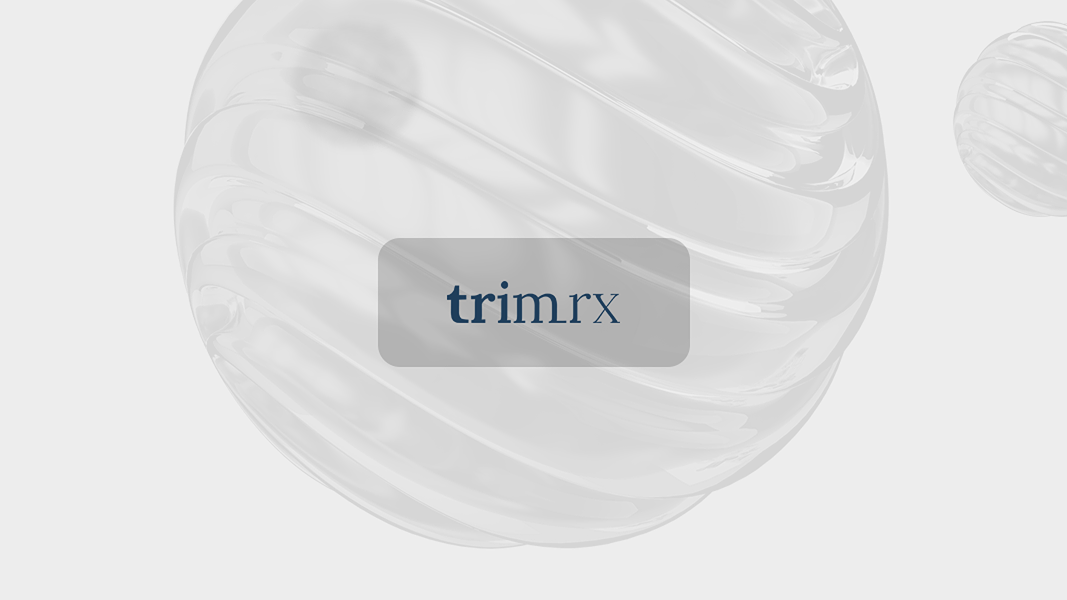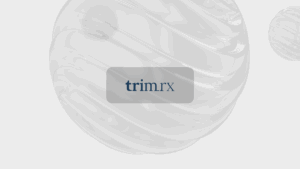Is Salmon Good for Weight Loss? A Detailed Look at Its Benefits and How to Incorporate It

Introduction
Have you ever wondered whether the delicious, pink-hued salmon that features on so many menus could actually be your secret weapon in a weight loss journey? The answer may surprise you, as salmon not only tantalizes taste buds but also delivers a powerhouse of nutrients that align closely with weight management goals. Beyond the appealing flavor and texture, salmon’s unique nutritional profile offers multiple benefits that can support fat loss, muscle maintenance, and overall metabolic health.
Today, we’ll embark on an in-depth exploration of why salmon is a valuable food choice for weight loss, how it stacks up against other protein sources, the best types of salmon to seek out, and practical tips to include it in your diet without compromising health or enjoyment. Together, we’ll clarify the role salmon plays in weight management — emphasizing that it is a supportive ally within a balanced, calorie-conscious plan rather than a miraculous standalone solution.
By integrating clinical insights with actionable advice, this post aims to equip you with a richer understanding of salmon’s place in safe, effective, and personalized weight loss. We’ll also highlight opportunities to enhance your journey with the right supplements and programs that align with your unique needs.
The Nutritional Value of Salmon and Its Role in Weight Loss
Salmon is often described as an “oily fish,” but this label highlights benefits rather than concerns. Its high content of long-chain omega-3 fatty acids, particularly EPA and DHA, sets it apart from many protein sources. These omega-3s support heart, brain, and metabolic health, making salmon a nutritional powerhouse.
A 100-gram serving of wild-caught salmon provides approximately 182 calories, 25.4 grams of protein, and a healthy dose of omega-3 fatty acids. Farmed salmon, while richer in fat and calories (about 206 calories per 100 grams), still supplies a generous 22.1 grams of protein. This balance between protein and beneficial fats, supported by an array of vitamins and minerals like B vitamins, selenium, potassium, and vitamin D, places salmon among the nutritious foods ideal for weight-conscious diets.
Protein for Fullness and Muscle Preservation
Protein plays a critical role in weight loss, much more than simply being a building block for muscle. High-protein foods like salmon enhance satiety, helping you feel full longer and reducing the likelihood of overeating or unhealthy snacking. Moreover, preserving lean muscle mass is vital during weight loss since muscle tissue burns more calories at rest than fat tissue, thus helping sustain a higher metabolic rate.
In research, eating about 20-30 grams of high-quality protein per meal optimizes muscle maintenance and calorie burning — something easily achieved with salmon. The 25-gram protein content in a typical serving means salmon can efficiently contribute to these goals.
Omega-3 Fatty Acids: Metabolic Boosters
Emerging science suggests omega-3s from salmon may increase metabolic rate and enhance fat oxidation. Studies demonstrate that omega-3 supplementation can boost metabolic rate by as much as 14% and reduce abdominal fat mass in overweight individuals when combined with a calorie-controlled diet and physical activity.
Omega-3s help improve insulin sensitivity, assisting in blood sugar regulation and reducing fat storage tendencies, particularly in the abdomen. These effects, while not substitute for sustained lifestyle changes, add valuable support to weight management strategies.
Low-Calorie, Nutrient-Dense Food Choice
When aiming for a calorie deficit, eating nutrient-dense foods that provide substantial nutritional value without excessive calories is essential. Salmon fits well into this framework, satisfying hunger and promoting health with fewer calories relative to many high-fat or processed alternatives.
Summary: Salmon is a rich source of protein and omega-3 fatty acids, nutrients that contribute to fullness, muscle preservation, and metabolic enhancement — all key components in a sustainable weight loss plan.
Comparing Salmon With Other Protein Sources for Weight Loss
If you find yourself deciding between salmon and other popular proteins, it’s helpful to compare their benefits related to weight loss.
Salmon vs. Chicken Breast
Chicken breast often emerges as a weight loss staple because of its low-calorie, high-protein nature. For example, 100 grams of chicken breast contains about 31 grams of protein and approximately 165 calories, which is a slightly higher protein-to-calorie ratio than salmon.
However, salmon offers additional nutrients that chicken lacks:
- Omega-3 fatty acids: Beneficial for heart and brain health.
- Vitamin D: Important for bone health and hormone regulation.
- Selenium and B vitamins: Vital for metabolic processes and inflammation reduction.
Though salmon is marginally higher in calories and fat (mostly healthy fats), its comprehensive nutrient profile can make it a more balanced option for overall health.
Salmon vs. Tuna or Shrimp
Tuna and shrimp are lean proteins with low fat and calories but lack the omega-3 fatty acid richness found in salmon. While excellent low-calorie choices, they don’t provide the same metabolic and anti-inflammatory benefits that salmon’s fatty acids bring.
Takeaway
Both salmon and other lean proteins can have a place in a tailored weight loss diet. Salmon’s unique benefits make it a compelling choice, especially when you aim to improve inflammation, heart health, and metabolic rate alongside calorie management.
Which Salmon is Best for Weight Loss?
Not all salmon varieties are nutritionally equal, and understanding these differences helps you make the most weight-loss-friendly choices.
Wild-Caught vs. Farmed Salmon
- Wild-Caught Salmon: Typically contains more protein, higher levels of minerals like potassium and selenium, and a generally leaner profile with fewer calories.
- Farmed Salmon: Often has a higher fat content and calories, but still provides substantial omega-3s and essential nutrients.
Both types are healthy, but those seeking a lower-calorie option typically prefer wild salmon. Nutritional content can also vary based on diet and environment, so sourcing quality fish is important.
Red (Sockeye) vs. Pink Salmon
Red salmon, primarily from sockeye species, tends to be richer in omega-3 fatty acids and protein compared to pink salmon. Pink salmon is often the farmed variety and usually lower in calories.
Safety Considerations: Mercury and Contaminants
Salmon, compared to other fish like swordfish or shark, is low in mercury and contaminants. Nonetheless, consuming 2-3 servings per week of salmon is recommended to balance benefits with any risk of environmental toxins.
Pregnant individuals should carefully moderate intake according to guidelines.
Healthy Ways to Incorporate Salmon Into Your Weight Loss Diet
Adding salmon to your meals can be simple and versatile. Here are six healthy preparations designed to enhance flavor while minimizing added fats and calories:
-
Steamed Salmon
A gentle cooking method that preserves moisture and nutrients without additional oil. -
Poached Salmon
Ideal for tender texture, poaching in water or broth keeps fat low and flavor fresh. -
Grilled Salmon
Requires minimal oil; grilling skin-side down helps retain juices and nutrients. -
Smoked Salmon
Convenient and tasty, but watch sodium content when using smoked varieties. -
Raw Salmon (Sushi/Sashimi)
For those who enjoy raw fish, this method retains nutrient density — just ensure sourcing from reputable suppliers. -
Canned Salmon
A budget-friendly, quick option, particularly when BPA-free cans are chosen. Use in salads or sandwiches without heavy dressings.
Pairing Salmon with Weight Loss-Friendly Sides
Try combining salmon with nutrient-rich, low-calorie sides like:
- Steamed or roasted non-starchy vegetables (broccoli, asparagus, spinach)
- Whole grains in moderation (quinoa, brown rice)
- Leafy green salads with lemon or vinegar-based dressings
This balance maximizes satiety and nutrient intake without excess calories.
How Much Salmon Should You Eat for Weight Loss?
Experts generally suggest two servings of oily fish like salmon per week to gain cardiovascular and metabolic benefits. For weight loss, portion sizes of 4 to 6 ounces per serving are appropriate within a calorie-controlled diet.
Daily consumption of salmon is typically safe but unnecessary for most people and can incur higher exposure to contaminants or mercury. Moderation and dietary variety remain essential.
If you’re interested in a personalized plan, taking a free assessment quiz can help determine which tailored weight loss options might suit your individual needs, including access to programs and medication support designed to complement dietary changes like including salmon.
Supporting Your Salmon-Focused Weight Loss Journey
At TrimRx, our journey began with a commitment to help individuals embrace healthier lifestyles through personalized, clinically-proven weight loss solutions. We combine cutting-edge telehealth innovations with medically supervised care, offering a user-friendly platform to help you achieve sustainable weight loss tailored specifically to your needs.
Our personalized weight loss programs include doctor consultations, lab work, unlimited support, and seamless medication shipping from FDA-registered pharmacies. Taking our free assessment quiz is a great first step to find out if prescription medications like Semaglutide or Tirzepatide might be appropriate for you.
To further support your journey, consider complementing your diet with our quick-access supplements such as:
- GLP-1 Daily Support — promoting fullness and supporting metabolic health.
- Weight Loss Boost — formulated to enhance energy and fat metabolism naturally.
Together, by pairing smart nutritional choices like including salmon with personalized medical guidance and supplements, you can set yourself up for long-term weight loss success.
Summary and Final Thoughts
Is salmon good for weight loss? The evidence strongly supports that it is — thanks to its high-quality protein, beneficial omega-3 fatty acids, and comprehensive vitamins and minerals essential for metabolic health. Salmon’s ability to promote fullness, support muscle retention, and potentially increase metabolic rate makes it a valuable component of an effective weight loss diet.
That said, sustainable weight loss requires a holistic approach: maintaining a calorie deficit, engaging in physical activity, and choosing nutrient-dense foods consistently. Salmon fits beautifully within this framework, not as a magic bullet, but as a delicious, nutritious ally.
We encourage you to consider integrating salmon progressively into your meals, selecting wild-caught varieties when possible, and preparing it in health-supportive ways. And remember, for truly personalized support—whether through advanced medications or supplemental products—our free assessment quiz at TrimRx can guide you to the most suitable solutions.
Embark on your weight loss journey armed with knowledge, a supportive team, and the wholesome goodness of salmon.
FAQ
Can eating salmon alone make me lose weight?
Salmon is a nutrient-rich food that supports weight loss efforts thanks to its protein and omega-3 content. However, no single food causes weight loss alone. Sustainable weight loss depends on an overall calorie deficit combined with a healthy, balanced diet and lifestyle.
How often can I safely eat salmon during weight loss?
Eating salmon 2 to 3 times per week is generally recommended to enjoy health benefits while minimizing risks from mercury or other contaminants. Daily consumption is usually safe but not necessary for most people.
Is wild salmon better than farmed salmon for weight loss?
Wild salmon tends to have higher protein, lower calories, and fewer contaminants compared to farmed salmon, making it typically preferable for weight loss. However, properly sourced farmed salmon still offers valuable nutrients.
How should I cook salmon for weight loss?
Healthy preparation methods include steaming, poaching, grilling with minimal oil, or enjoying smoked or canned salmon without high-fat or high-sodium additives. Avoid heavy sauces or breading to keep calorie intake controlled.
Can salmon replace other proteins in my diet?
Salmon can be an excellent protein source within a varied diet that includes lean meats, poultry, legumes, and plant proteins. Its omega-3s provide benefits that other proteins may lack, making it a nutritious complement rather than a strict replacement.
How can I maximize weight loss while enjoying salmon?
Pair salmon with vegetables, whole grains in moderation, and healthy fats. Incorporate physical activity regularly and consider personalized programs with medical support like TrimRx’s weight loss medication and supplement options to optimize results.
Ready to explore personalized weight loss options? Start by taking our free assessment quiz to discover tailored treatment plans that complement your nutritional strategies, including enjoying salmon wisely. Visit: TrimRx Free Quiz
For quick support supplements that promote fullness and metabolism, check out:
Together with salmon and personalized care, your weight loss journey can be more effective and sustainable.

Transforming Lives, One Step at a Time
Keep reading
Is Not Eating Breakfast Good for Weight Loss?
Wondering if not eating breakfast is good for weight loss? Discover the latest research and tips for a healthier approach to your diet!
Does Eating Fruit Help with Weight Loss? Exploring the Sweet Science
Discover how eating fruit helps with weight loss. Learn the benefits, top fruits, and tips to boost your health journey today!
How to Eat Chana for Weight Loss: A Comprehensive Guide
Discover how to eat chana for weight loss with practical tips, delicious recipes, and nutritional insights. Start your journey to better health today!
Can We Eat Dark Chocolate in Weight Loss? Exploring the Facts
Wondering can we eat dark chocolate in weight loss? Discover how to enjoy this treat while staying on track with your diet. Learn more now!
Can I Eat Idli for Weight Loss?
Wondering if you can eat idli for weight loss? Discover its benefits, nutritional profile, and perfect pairings for a healthy diet!
Can We Eat Curd During Weight Loss?
Wondering if we can eat curd during weight loss? Discover its benefits, how to incorporate it into your diet, and debunk common myths!
Can I Eat Bread for Weight Loss? Debunking the Myths and Exploring the Benefits
Wondering if you can eat bread for weight loss? Discover how to incorporate healthy bread into your diet while achieving your weight loss goals!
Does Walking After Eating Help with Weight Loss?
Discover how walking after eating helps with weight loss! Learn its benefits for digestion and blood sugar control. Start your journey today!
Can I Eat Peanut Butter During Weight Loss? Exploring the Benefits and Best Practices
Wondering, ‘can I eat peanut butter during weight loss?’ Discover how to enjoy this creamy treat while reaching your goals. Learn more!






